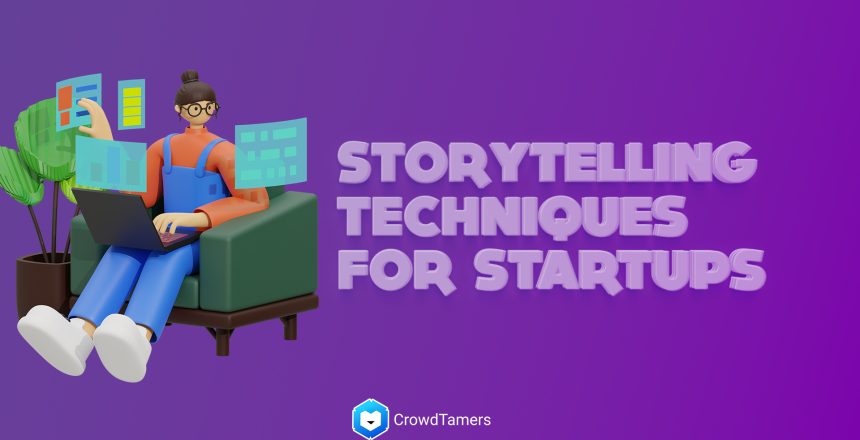As a startup founder, you know that getting your message out there and connecting with potential customers is crucial. Facebook is an excellent platform to reach your target audience, but with so much content vying for attention, how can you make your startup’s story stand out?
The key is storytelling. By crafting compelling narratives around your startup’s mission, products, and values, you can capture people’s interest, build an engaged community, and even validate your ideas. In this post, we’ll explore storytelling techniques for startups on Facebook and how to use them to your advantage.
Why Storytelling Matters on Facebook
Before we get into the nitty-gritty of how to craft compelling stories on Facebook, let’s take a step back and explore why storytelling matters in the first place.
At its core, storytelling is a fundamental human experience. From ancient cave paintings to modern-day social media posts, we’ve been telling stories for as long as we’ve been communicating. Stories have the power to engage, inspire, and connect us in ways that few other forms of communication can.
When it comes to Facebook marketing, storytelling is especially important for startups. As a new brand, you don’t have the luxury of a long history or established reputation to fall back on. Instead, you need to build trust and credibility with your audience from scratch – and storytelling is one of the most effective ways to do that.
By sharing authentic, relatable stories about your startup journey, your team, and your mission, you can humanize your brand and create an emotional connection with your audience. This connection is key to building a loyal following and driving engagement on your Facebook page.
Using Storytelling to Validate Your Startup Idea
But storytelling on Facebook isn’t just about engaging your audience – it can also be a powerful tool for validating your startup idea and gathering feedback from your target market.
Here’s how it works: by sharing stories about your startup journey and the problem you’re trying to solve, you can gauge your audience’s reaction and interest level. If people are engaging with your stories, asking questions, and sharing their own experiences, that’s a good sign that your idea resonates with them.
On the other hand, if your stories fall flat and don’t generate much engagement, that could be a red flag that your idea needs some tweaking or refinement.
The beauty of using Facebook for idea validation is that you can gather this feedback quickly and at scale. By targeting your posts to specific demographics or interest groups, you can get a sense of how different segments of your target market respond to your idea.
Of course, Facebook storytelling is just one piece of the idea validation puzzle – you’ll also want to conduct more formal market research and gather feedback through other channels. But it’s a great place to start and can give you valuable insights to inform your startup strategy.
Crafting Compelling Stories on Facebook
Okay, so we know why storytelling matters and how it can help validate your startup idea. But how do you actually craft compelling stories that engage your audience and drive results? Here are some tips and techniques to keep in mind:
1. Know Your Audience
The first step in crafting compelling stories on Facebook is to know your audience. Who are you trying to reach, and what do they care about? What are their pain points, goals, and values?
The better you understand your audience, the more effectively you can tailor your stories to resonate with them. For example, if you’re targeting busy working moms, you might share stories about how your product or service helps simplify their lives and save them time.
2. Be Authentic and Relatable
One of the biggest mistakes startups make when storytelling on Facebook is trying to be something they’re not. Don’t try to craft a perfect, polished image – instead, be authentic and relatable.
Share stories about the challenges and setbacks you’ve faced as a startup, as well as the successes and milestones. Be honest about your journey and the lessons you’ve learned along the way.
By being authentic and relatable, you’ll build trust and credibility with your audience and make them more likely to engage with your brand.
3. Use Visuals to Bring Your Stories to Life
Facebook is a highly visual platform, so it’s important to use images and videos to bring your stories to life. Visuals can help grab your audience’s attention, convey emotion, and make your stories more memorable.
For example, if you’re sharing a story about your team, include photos or videos of them in action. If you’re sharing a customer success story, include before-and-after photos or a video testimonial.
Just make sure your visuals are high-quality and relevant to your story – grainy or generic stock photos won’t cut it!
4. Follow a Narrative Arc
To make your stories more engaging and memorable, try following a narrative arc. This means structuring your story with a clear beginning, middle, and end, and including elements like conflict, resolution, and transformation.
For example, you might start your story by introducing a problem or challenge your startup faced, then describe the journey you went on to overcome that challenge, and end with the lessons you learned or the impact you made.
By following a narrative arc, you’ll make your stories more compelling and easier for your audience to follow and remember.
5. Keep It Snappy and Shareable
Finally, keep in mind that attention spans on Facebook are short – you need to make your stories snappy and shareable. Aim for shorter, punchier posts rather than long-winded essays, and make sure your key message is clear and upfront.
You can also use storytelling techniques like cliffhangers or open loops to encourage your audience to engage with your posts and share them with their own networks. For example, you might end a post with a question or a teaser for your next story.



